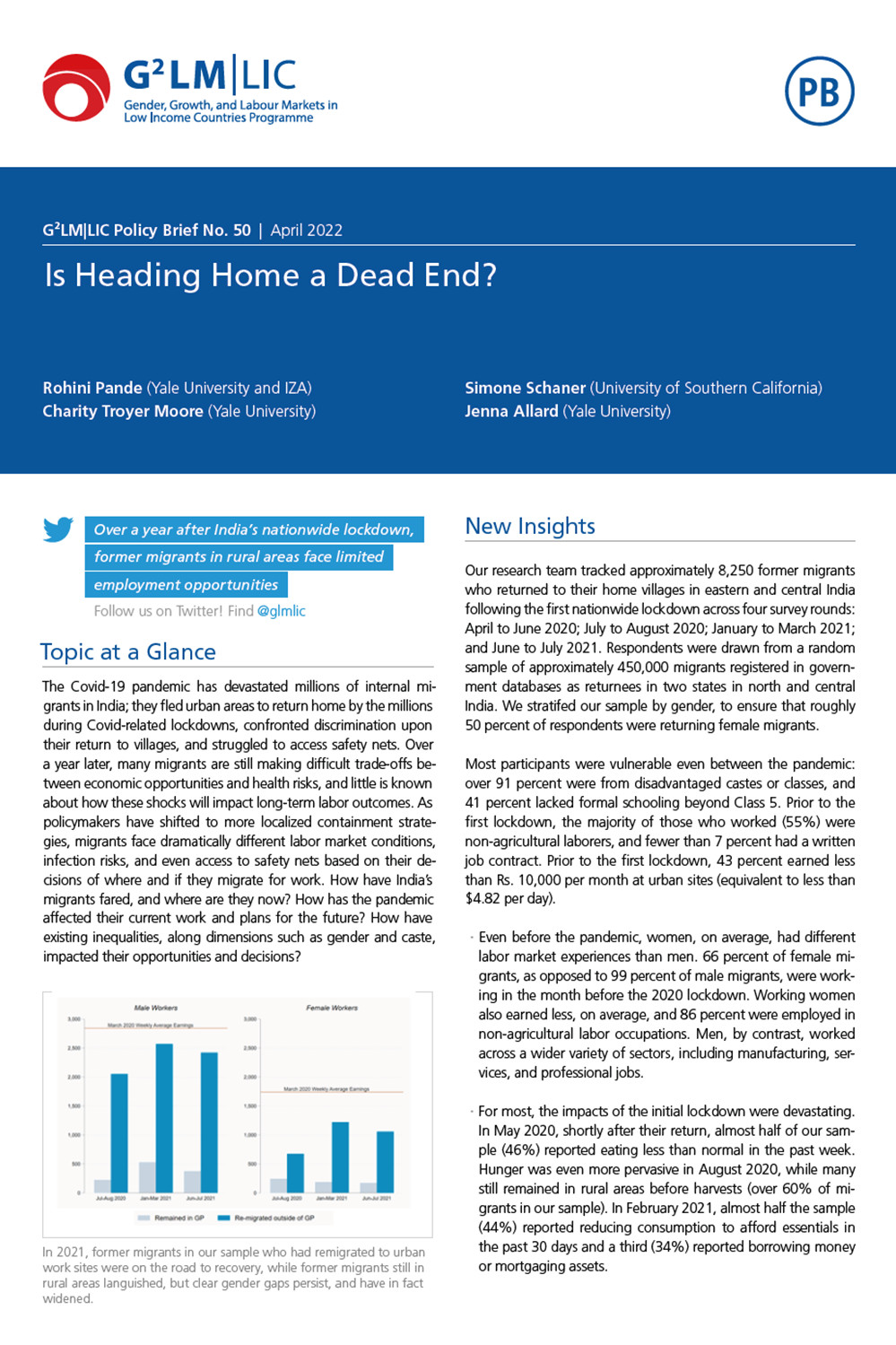The Covid-19 pandemic has devastated millions of internal migrants in India; they fled urban areas to return home by the millions during Covid-related lockdowns, confronted discrimination upon their return to villages, and struggled to access safety nets. Over a year later, many migrants are still making difficult trade-offs between economic opportunities and health risks, and little is known about how these shocks will impact long-term labor outcomes. As policymakers have shifted to more localized containment strategies, migrants face dramatically different labor market conditions, infection risks, and even access to safety nets based on their decisions of where and if they migrate for work. How have India’s migrants fared, and where are they now? How has the pandemic affected their current work and plans for the future? How have existing inequalities, along dimensions such as gender and caste, impacted their opportunities and decisions?
